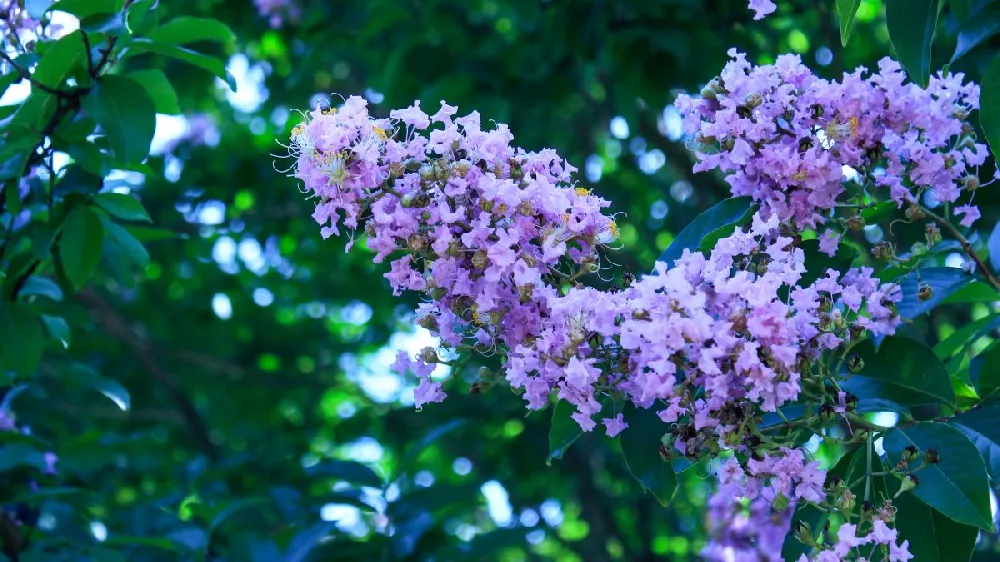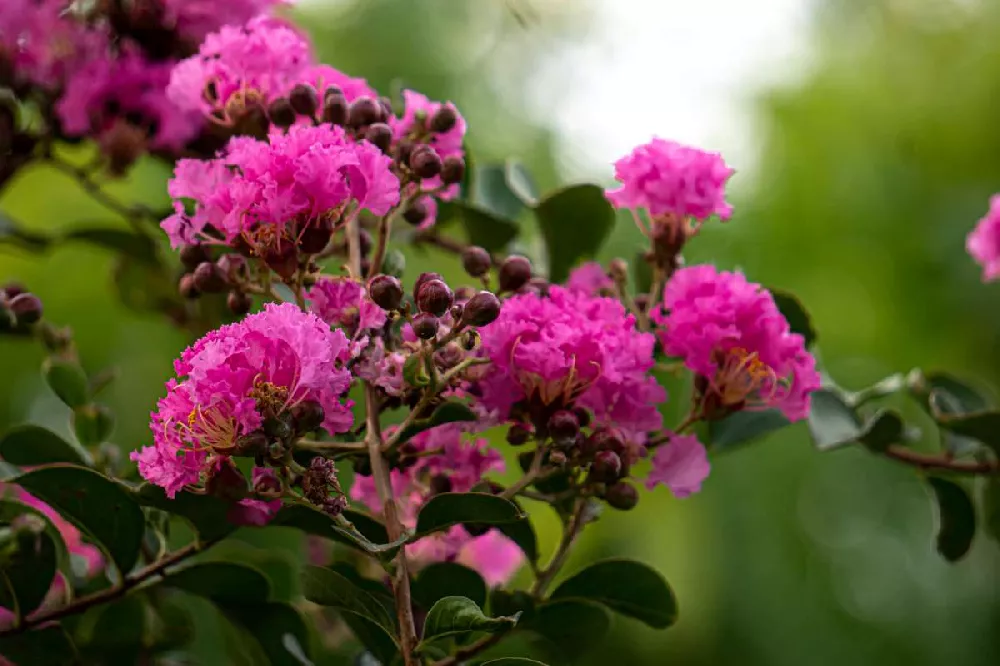- Home >
- Flowers >
- Flowers That Start With ‘C’ >
- Catawba Crape Myrtle Tree
Catawba Crape Myrtle Tree for Sale - Buying & Growing Guide
Truly a tree for four seasons of interest, the Catawba Crape Myrtle is one of the most colorful and hardy of the crape myrtles. It has an elegant, vase-shaped silhouette that can be pruned into a single-trunk tree or allowed to grow as a multi-stem bush. The large, purple blooms cover the tree from spring through fall, leading to a fall display of leaves that are red-bronze, orange and yellow. In the cooler months, the exfoliating bark lends welcome texture to the winter garden. The tree needs little care and is an easy grower that thrives in most soil types. Here are a few more reasons to consider adding one to your garden:
- It is resistant to mildew and other common diseases.
- It can be grown in a container for Northern gardeners.
- It is a perfect choice for mixed shrub borders.
Enter your zip code to find nearby stores that may carry this plant.
Plant Care
Sunlight

Catawba Crape Myrtle thrives in full sun — 6 or more hours of direct light a day.
Watering
Once established, Catawba Crape Myrtle only needs supplemental watering in times of drought.
Fertilizing

Fertilize during the growing season with a balanced, slow-release produce designed for landscape trees.
Planting and Care
Planting instructions
Site your tree in soil that drains well and receives at least 6 hours of sun each day. Unpot the tree and tease out any encircling roots, which can girdle the tree and slowly kill it. Dig a hole as deep as the root ball and twice as wide. Place the tree in the hole, spreading out the roots. Holding it upright and steady, fill in around the roots with topsoil, tamping down as you go to eliminate air pockets. Water thoroughly. Apply a 2- to 3-inch layer of organic mulch such as bark chips around the root zone to conserve moisture and hinder weed growth, but keep it from touching the trunk to avoid problems with rot.
Watering and nutrients
When newly planted, water your Catawba tree every few days until you begin to see robust new growth on the branches. Then scale back to once-a-week watering, giving your tree about an inch of water at a time. Once your tree is established, it will only need supplemental watering when it is very hot or dry outside. Fertilize in spring with a balanced, slow-release product, such as a 10-10-10 formula that’s designed for landscape trees and shrubs.
Pollination
Crape myrtle trees are monoecious, meaning that a single tree has both male and female reproductive parts in its flowers. The flowers are pollinated by insects such as bees and butterflies, leading to small brown seed pods late in the season.
Pruning
Monitor your Catawba Crape Myrtle for dead, diseased or damaged limbs and cut them out whenever you see them. If you wish to grow your plant as a single-trunked tree, prune out all but one main trunk, as well as any suckers that appear near the base of the tree. No other pruning is necessary, but you can prune to shape it or control the height and width in spring.
Pests and diseases
Pests that may prey on crape myrtles include crape myrtle aphids and Japanese beetles. A healthy tree can fight off most infestations. Beetles can be picked off by hand or use a trap specific to this pest. Aphids can be controlled by releasing beneficial insects such as ladybugs and lacewings. Catawba Crape Myrtle is resistant to powdery mildew, the most common crape myrtle disease. Plant your tree in a spot with good circulation and prune to keep the center open to avoid problems with fungal diseases.
Achieving maximum results
Catawba Crape Myrtle grows beautifully outdoors in the Southern states and West Coast, but if you live in the North, it’s still easy to grow this impressive variety in a container that is brought indoors in the winter. Even in the South, a container-grown Catawba can be a great patio plant, or you can use two to flank a front door. Container growing isn’t difficult. Choose a pot that is about twice the size of the root ball, with good drainage holes in the bottom. Use a good quality potting mix and plant as per our directions above. Keep in mind that a pot-grown plant may need more supplemental watering than one grown in the ground, and make sure to fertilize your tree every year. A container-grown tree is unlikely to get as big as one grown in the ground, but you can keep it to a manageable height by regular pruning.
FAQs
How big does Catawba Crape Myrtle get?
When grown outside, these plants can reach a mature height of 10-15 feet, with a width of 8-12 feet. You can control this growth, however, by pruning back the tree's new growth in spring to the height and width you desire.
Where can I grow Catawba Crape Myrtle?
This versatile tree is hardy down to 10 degrees Fahrenheit, so it can be grown in USDA hardiness zones 7-9. That includes most of the Southeastern states and as far north as Pennsylvania on the East Coast and coastal Washington and Oregon on the West Coast. In colder regions, it can be container-grown and taken inside during the colder months.
How can I use Catawba Crape Myrtle in my landscape?
This crape myrtle is an excellent specimen plant — consider placing a grouping of three or five in a front yard, where the blooms are easily visible. It works well as a foundation planting or in a mixed perennial border and would be an asset in a cottage garden or other informal setting.
Compare Similar Products
You can't add more Product Name - Product size to the cart.
OK







